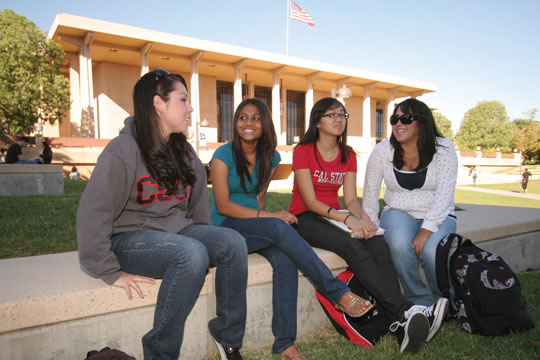Are California’s Vaunted State Colleges Losing Their Competitive Edge?

There’s a virtual trade imbalance affecting California’s vaunted state university system that’s the result of both higher costs for public education in the Golden State and a diminution of quality in its college programs.
Students are leaving California for out-of-state universities in droves, reported the Sacramento Bee on Sunday. And while the UC and CSU systems are working hard to attract out-of-state students (who pay higher tuitions), a greater number of in-state students are leaving for colleges such as Arizona State University and the University of Oregon.
State-mandated cuts in budgets for higher education are largely the culprit. Higher tuitions at the UC and CSU systems have made out-of-state choices more viable financially. While reduced availability of core classes has made California’s schools less desirable.
The numbers are alarming. Between 2000 and 2010, the University of Oregon quadrupled its count of incoming California freshmen, while Arizona State University more than doubled its California enrollment. Even out-of-state private schools have benefited from the trend, with schools such as New York University and Boston University nearly doubling their California freshman enrollment in the last decade.
“These numbers are in the wrong direction for the state,” Hans Johnson, a researcher with the Public Policy Institute of California told the Bee, noting that the state will have one million fewer college graduates by 2025 than its industries will require. There’s concern that a large percentage of these California émigrés will not return upon graduation.
More than 27,000 graduating high school seniors left for out-of-state colleges in 2010, up 90 percent from the 2000 figures. In turn, only 10,700 out of state students entered California state schools in 2010 compared with 8,800 in 2000.
“Tuition and fees at California’s two public college systems have more than tripled in the last decade, narrowing the still-large gap between in-state tuition at a public California college and out-of-state tuition at many similar colleges,” the Bee reported.
Worse still, budget cuts have limited the availability of classes needed to graduate in four years, further escalating the cost of higher education in the state’s schools. Today, fewer than 10 percent of students on Cal State University campuses graduate in four years. This compares to 30 percent of students at Arizona State University who complete their studies in four years. The extra time and related costs further reduces the expense of an out-of-state school versus in-state tuition.
Even private schools have been able to narrow the gap through more generous programs of scholarships and tuition aid than what is available at state schools. The often richer array of available courses in less budget-strapped schools further sweetens the pot.
“The constant cycle of tuition increases, cuts and protests has damaged the reputation of the state’s public colleges” in the minds of high school students and guidance counselors, according to the Bee.
Meanwhile, university faculties and administrators at the state’s colleges are struggling for budgets and seeking ways to make their courses more attractive to students. This has caused a de-emphasis on traditional liberal arts curricula in favor of more practical alternatives.
“In a cost-cutting environment,” one state college professor told me, “departments are battling for funding.” This competitiveness may well change the way we view higher education.
A recent column by Frank Bruni in the New York Times argued that traditional university liberal arts courses were not worth the high tuition because they fail to prepare students for the “real world.” History professor Cheryl Greenberg of Trinity College in Hartford countered:
“…the study of the liberal arts is good for everything and anything, but especially for discovering what you are good for – or raising questions about what anything is good for. Ideally, it leads us to more fulfilling careers and more meaningful lives….”
California’s celebrated university system has helped fuel the state’s growth and enabled its entrepreneurial spirit. We should move cautiously before we balance the state’s budgets at the cost of our academic future.





